
Malacology is the branch of invertebrate zoology that deals with the study of the Mollusca, the second-largest phylum of animals in terms of described species after the arthropods. Mollusks include snails and slugs, clams, and cephalopods, along with numerous other kinds, many of which have shells. Malacology derives from Ancient Greek μαλακός (malakós) 'soft', and -λογία (-logía).

Conchology is the study of mollusc shells. Conchology is one aspect of malacology, the study of molluscs; however, malacology is the study of molluscs as whole organisms, whereas conchology is confined to the study of their shells. It includes the study of land and freshwater mollusc shells as well as seashells and extends to the study of a gastropod's operculum.
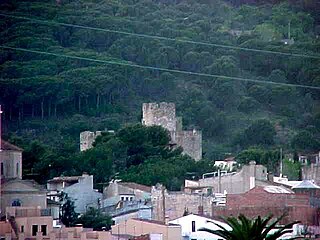
Vilassar de Dalt is a village in Catalonia, Spain, in the province of Barcelona and the comarca of Maresme. The name comes from the Roman name Villa Azari, later changed to Vilassar. In the 20th century, it split into two villages: Vilassar in the hills, and Vilassar by the Sea.

Geerat J. Vermeij is a Dutch-born paleoecologist and evolutionary biologist in the Department of Earth and Planetary Sciences at the University of California, Davis. He studies marine molluscs, both as fossils and as living creatures, as well as influence creatures have on each other's evolutionary fates, alongside having worked on plants, crabs, extinction, biological invasions, and biogeography. He received a MacArthur Fellowship in 1992, and in 2000, was awarded the Daniel Giraud Elliot Medal from the National Academy of Sciences. He was also a fellow of the California Academy of Sciences in 1992 and was awarded the Fellows Medal from the California Academy of Sciences in 2017.

Vilafranca del Penedès, or simply Vilafranca, is the capital of Alt Penedès county in Penedès, Catalonia, Spain. It is situated in the Penedès Depression on the left bank of the Foix River, and on the main axis of communication from Barcelona to Tarragona and Valencia, served by a Rodalies Barcelona line 4 and by the AP-7 autopista as well as by the C-243 towards Sant Sadurní d'Anoia, and C-15 roads to Vilanova i la Geltrú and Igualada respectively.

Argentona is a municipality in the comarca of the Maresme in Catalonia, Spain. It is situated on the south-east side of the granite Litoral range, to the north-west of Mataró. The town is both a tourist centre and a notable horticultural centre. A local road links the municipality with Cabrera de Mar and with the main N-II road at Vilassar de Mar.
Robert Tucker Abbott was an American conchologist (seashells) and malacologist (molluscs). He was the author of more than 30 books on malacology, which have been translated into many languages.

Mundet is a Barcelona Metro station, in the Horta-Guinardó district of Barcelona, which takes its name from the Recinte Mundet, an adjacent area that now houses a campus of the University of Barcelona. The station is served by line L3.
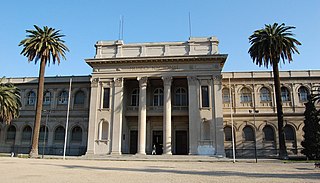
The Chilean National Museum of Natural History is one of three national museums in Chile, along with the Museum of Fine Arts and the National History Museum. It is located in Quinta Normal Park. Founded on September 14, 1830 by the French naturalist Claudio Gay, the director of the Museum and the Botanical garden was another Frenchman Jean-François Dauxion-Lavaysse.
George Alan Solem, known professionally as Alan Solem, was an American malacologist, a biologist who studied mollusks.

William Erwood Old Jr. usually known as Bill Old, was an American malacologist.
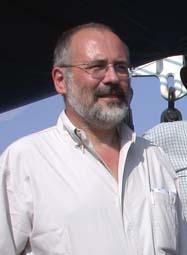
Philippe Bouchet is a French biologist whose primary scientific fields of study are malacology and taxonomy. He works at the Muséum National d'Histoire Naturelle in Paris. He is also a Commissioner of the International Commission on Zoological Nomenclature.

Hermann Wilhelm Strebel was a merchant, ethnologue and a malacologist from Germany and Mexico.
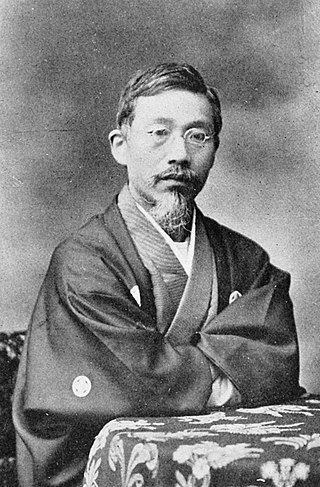
Yoichirō Hirase was a Japanese malacologist and business man. His son, Shintarō Hirase, (1884-1939) was also a malacologist. The majority of his collection of molluscs were destroyed during World War II.
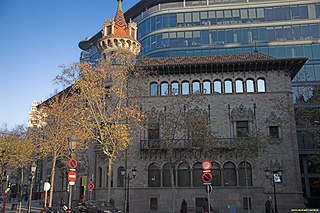
The Barcelona Provincial Council Local Museum Network, also known as Catalonia’s Biggest Museum, is a tool for support and collaboration from and for the museums of the province, which makes available to municipalities a series of services and actions aimed at improving, through the provision of direct services and research into viable formulas for supramunicipal cooperation, the management, conservation and dissemination of heritage and the museum facilities of the towns of Barcelona province. It is managed from the Cultural Heritage Office, which in turn depends on the Department of Knowledge and New Technologies of Barcelona Provincial Council.

The purpose of the Vilassar de Dalt Archive-Museum is the conservation and dissemination of the archaeological, architectural, historical, natural and cultural heritage of Vilassar de Dalt and its environment. Located in the Can Banús farmhouse, records for which date back as far as the 14th century, its main collection can be broken down into four categories: archaeology, textiles, history and the historic archive.
The Vilassar de Mar Municipal Museum is a local museum in Vilassar de Mar comprising two facilities: The Marina Museum, focusing on local history and placing special emphasis on its connection with the nautical world, and the Monjo Museum, which tells the story behind the legacy of Vilassar de Mar sculptor Enric Monjo.
Angeline Myra Keen (1905–1986) was an American malacologist and invertebrate paleontologist. She was an expert on the evolution of marine mollusks. With a PhD in psychology. Keen went from being a volunteer, identifying shells at Stanford, and having no formal training in biology or geology, to being one of the world's foremost malacologists. She was called the "First Lady of Malacology".

Alex Clapés was a Catalan modernisme artist. He was one of the less known painters in the late 19th century and early 20th century in Catalonia, Spain. He was born in Vilassar de Dalt on September 10, 1850. He died in Barcelona in 1920. He is most known for performing some commissions for the Güell family, thanks to his friend and colleague, Antoni Gaudí.
The Archive of the Marquises of Santa Maria de Barberà (AMSMB) is the most important heritage archive in Catalonia, located in the castle of the Marquises of Santa Maria de Barberà in Vilassar de Dalt, Spain.





























